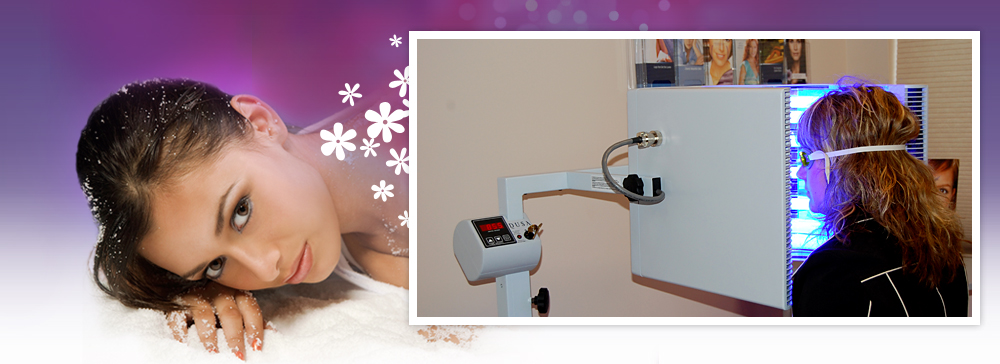
UV Light Treatment / PUVA Photo Therapy
PUVA therapy is a combined drug and ultraviolet light program. You will take a psoralen (Oxsoralen Ultra) medication before you get into a special ultraviolet A (UVA) light box. PUVA was first developed in 1974 and has been used to treat a variety of skin disorders including psoriasis, vitiligo, mycosis fungoides, and various other skin conditions. This treatment is NOT A CURE, but may effectively control or improve your disease.
The psoralen medication may be taken by pill form (systemic PUVA) or by soaking in topical solution (bath PUVA). The medication makes the skin more sensitive to the UVA light, which makes the light work more effectively.
Each condition and patient will vary in the number of treatments needed. Initially, the treatment will start with only a few minutes of light exposure, and then may gradually increase to approximately 20 minutes of exposure depending on patient tolerance and skin condition being treated. The average patient requires 2-3 treatments per week. Most psoriasis and eczema patients require 15-20 treatments to improve the disease. Mycosis fungoides and vitiligo often need more treatments. After cleaning, some patients continue with maintenance treatments every 2-4 weeks for many months.
The psoralen medication may be taken by pill form (systemic PUVA) or by soaking in topical solution (bath PUVA). The medication makes the skin more sensitive to the UVA light, which makes the light work more effectively.
Each condition and patient will vary in the number of treatments needed. Initially, the treatment will start with only a few minutes of light exposure, and then may gradually increase to approximately 20 minutes of exposure depending on patient tolerance and skin condition being treated. The average patient requires 2-3 treatments per week. Most psoriasis and eczema patients require 15-20 treatments to improve the disease. Mycosis fungoides and vitiligo often need more treatments. After cleaning, some patients continue with maintenance treatments every 2-4 weeks for many months.
The expected benefits of PUVA photography are
- Improvement of existing lesions;
- Reduction of new lesions;
- Remission-in many cases photography has resulted in a near-total clearing of the disease process. The duration of remission varies with each patient. Maintenance therapy may be required.
Risks and side-effects of PUVA photography
- Occasional nausea and stomach upset when taking pills for systematic PUVA. This can be corrected by taking the pills with food.
- The drug stays in the skin for up to 24 hours after it has been taken. Avoid sun exposure after the treatment. Protect yourself with clothing and sunscreen. Sunburn reactions from psoralen can be life-threatening so do not expose yourself to the sunlight or tanning beds after taking the medications. It may take 1-2 days for this sunburn to first show up and may last for several days. Certain drugs may also increase light sensitivity. Please let your doctor/nurse know of any medications you are taking or currently have started.
- It is possible with any form of UV light that an increased incidence of skin cancer (including melanoma) may occur later in some patients, usually only with UV light treatments.
- UV treatments may cause dryness and itching.
- UV treatments age the skin over time and may increase freckles and pigmentation of the skin.
- Ultraviolet rays may damage the eyes and increase your risk of cataracts. This is preventable with protective eye goggles worn during the treatment. Systemic PUVA patients must also wear UV protective eye goggles for up to 24 hours after treatment since the pills make your eyes more sensitive to light.
- UV light may cause a flare of fever blisters and mouth ulcers in susceptible people.
- Long-term UV exposure to the unprotected genital area in men may cause an increase in genital cancer. Therefore all men will wear an athletic supporter while in the light box.
- UV light may cause exacerbation of other medical conditions such as lupus erythematous which have sensitivity to UV wavelength.




